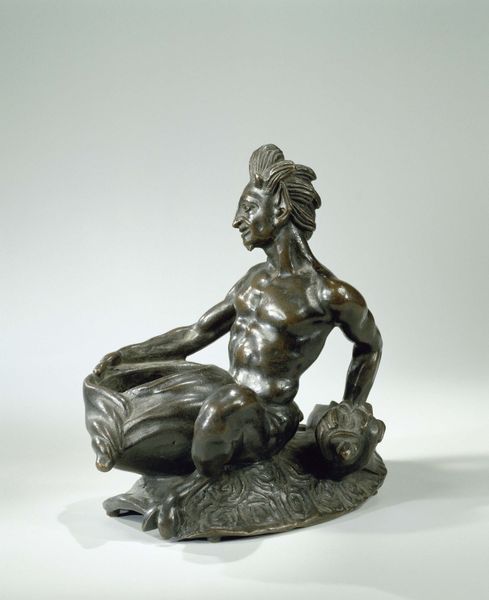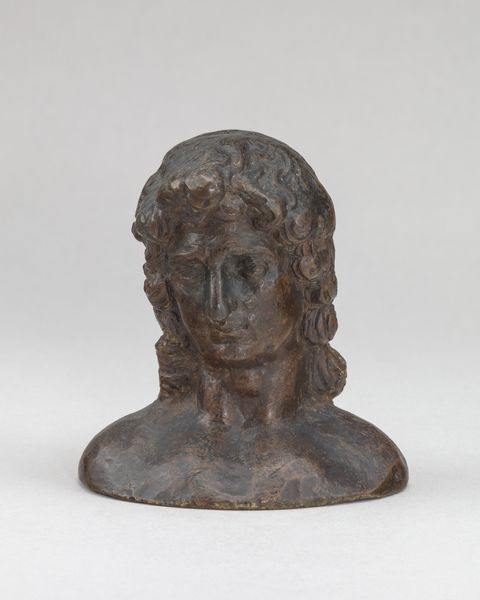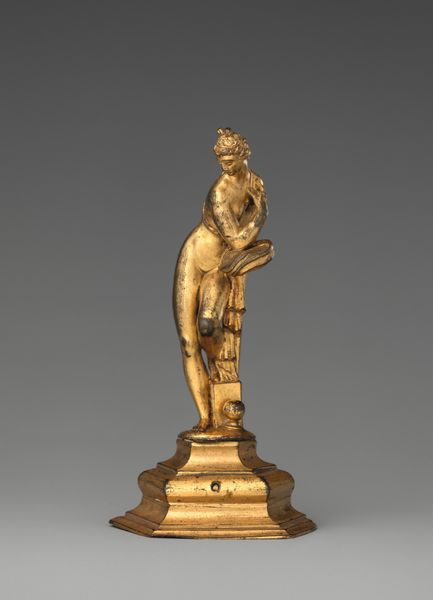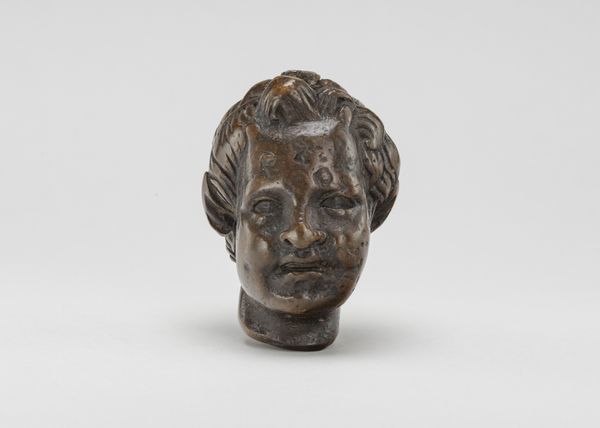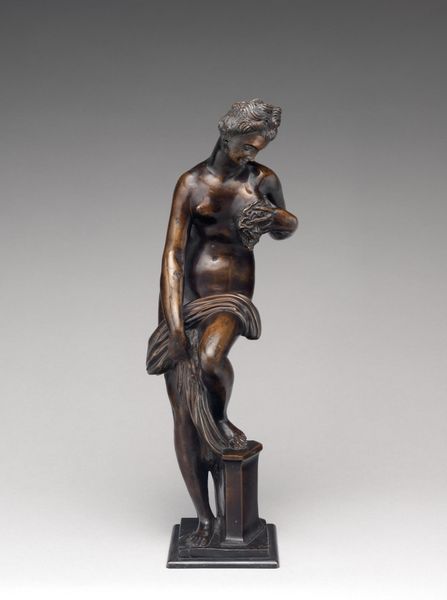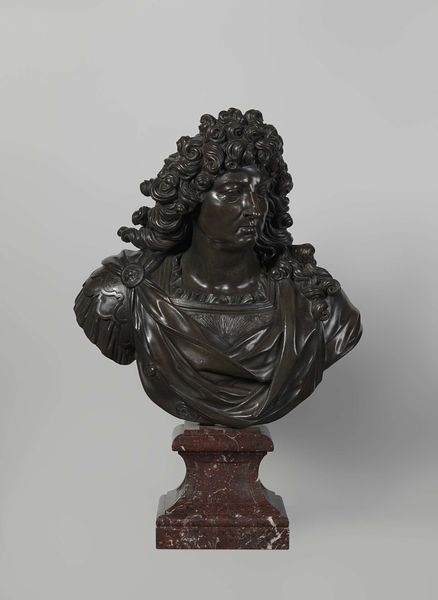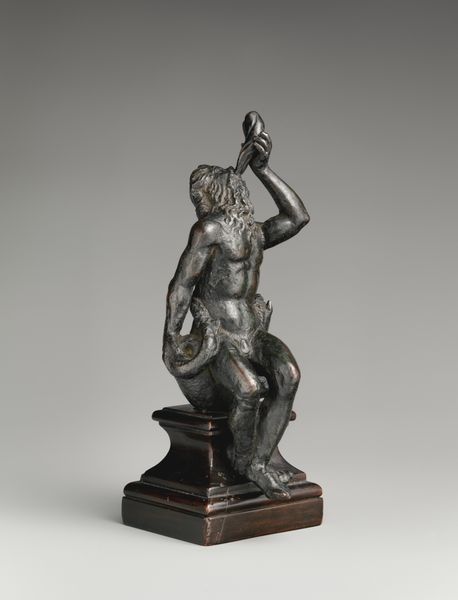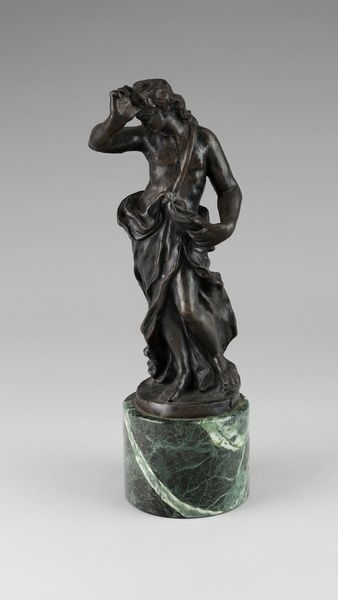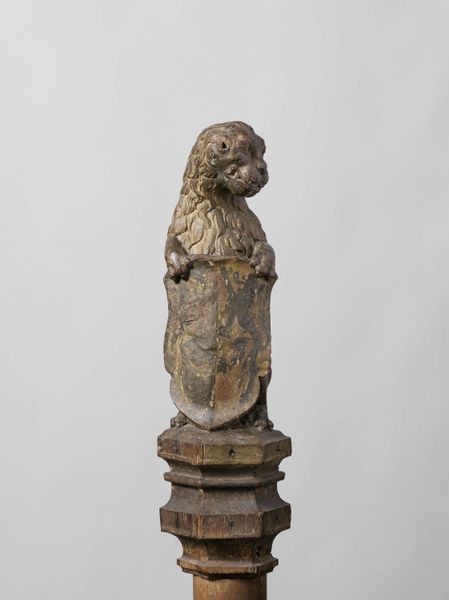
bronze, sculpture
#
portrait
#
sculpture
#
classical-realism
#
bronze
#
sculpture
#
academic-art
#
statue
Dimensions: H. 21.8 cm (8 9/16 in.)
Copyright: Public Domain
Curator: Jan Jozeph Jaquet's bronze sculpture, "Mascarade," created in 1857 and residing here at the Art Institute of Chicago, is really striking. The artist portrays a woman adorned with a mask. What is your first impression of this piece? Editor: It strikes me as melancholic. The downturned gaze, partially obscured by the mask... There's a real sense of something hidden, not joyous as the title "Mascarade" might suggest. Curator: Yes, the work has a deceptive quality, where concealment paradoxically invites deeper exploration of emotion. The positioning of the mask is noteworthy: it’s askew, almost as if it’s slipping. This placement disrupts the perfect symmetry often seen in Neoclassical sculpture, introducing a degree of tension and precariousness. Editor: The slipping mask could represent the instability of social identity in 19th-century Europe. It hints at the psychological turmoil of the era—the performative aspects of social life that, perhaps, the rising bourgeois class found themselves bound by. I wonder if this was a subtle commentary on courtly or public behavior? Curator: An insightful interpretation. Looking closely, the texture of the bronze itself is quite interesting. The subtle variations in the patina highlight the contours of her face and drapery, emphasizing the tactile qualities of the sculpture. This enhances the lifelikeness, drawing viewers into an intimate engagement with the figure. Editor: Certainly. And notice the artist’s detailing of the jewelry and hair ornaments. Jaquet paid precise attention to these material signs of wealth and status that could reinforce—or perhaps question—the identity and roles of women in that period. This piece makes us confront the relationship between outward appearance and inner feelings. Curator: Indeed. Jaquet manages to instill this sculpture with complexity, compelling viewers to consider their relationship between art and perception. Thank you for joining me in examining this bronze work, inviting reflection on hidden emotions beneath public image. Editor: My pleasure. This artwork prompts a broader inquiry into our ability to interpret subjective experience portrayed through symbols—opening dialogues for us, centuries later.
Comments
No comments
Be the first to comment and join the conversation on the ultimate creative platform.


